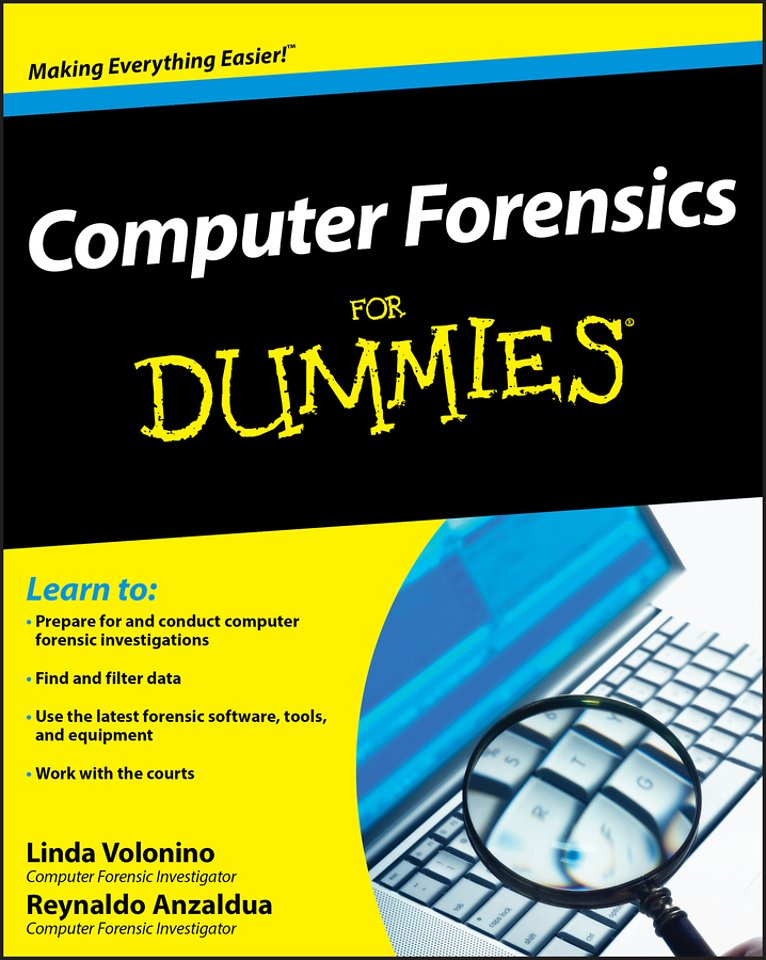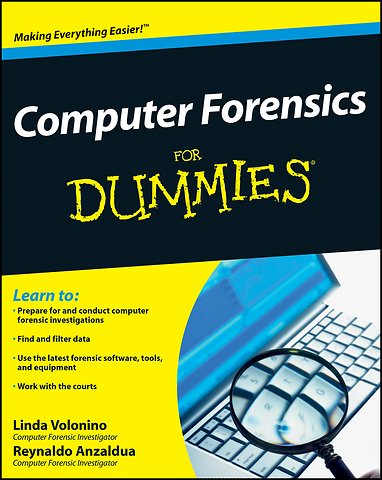Computer Forensics For Dummies
Samenvatting
Uncover a digital trail of e–evidence by using the helpful, easy–to–understand information in
Computer Forensics For Dummies! Professional and armchair investigators alike can learn the basics of computer forensics, from digging out electronic evidence to solving the case. You won t need a computer science degree to master e–discovery. Find and filter data in mobile devices, e–mail, and other Web–based technologies.
You ll learn all about e–mail and Web–based forensics, mobile forensics, passwords and encryption, and other e–evidence found through VoIP, voicemail, legacy mainframes, and databases. You ll discover how to use the latest forensic software, tools, and equipment to find the answers that you re looking for in record time. When you understand how data is stored, encrypted, and recovered, you ll be able to protect your personal privacy as well. By the time you finish reading this book, you ll know how to:
Prepare for and conduct computer forensics investigations
Find and filter data
Protect personal privacy
Transfer evidence without contaminating it
Anticipate legal loopholes and opponents methods
Handle passwords and encrypted data
Work with the courts and win the case
Plus, Computer Forensics for Dummies includes lists of things that everyone interested in computer forensics should know, do, and build. Discover how to get qualified for a career in computer forensics, what to do to be a great investigator and expert witness, and how to build a forensics lab or toolkit.
Note: CD–ROM/DVD and other supplementary materials are not included as part of eBook file.
Specificaties
Inhoudsopgave
<p>Part I: Digging Out and Documenting Electronic Evidence.</p>
<p>Chapter 1: Knowing What Your Digital Devices Create, Capture, and Pack Away Until Revelation Day.</p>
<p>Chapter 2: Suiting Up for a Lawsuit or Criminal Investigation.</p>
<p>Chapter 3: Getting Authorized to Search and Seize.</p>
<p>Chapter 4: Documenting and Managing the Crime Scene.</p>
<p>Part II: Preparing to Crack the Case.</p>
<p>Chapter 5: Minding and Finding the Loopholes.</p>
<p>Chapter 6: Acquiring and Authenticating E–Evidence.</p>
<p>Chapter 7: Examining E–Evidence.</p>
<p>Chapter 8: Extracting Hidden Data.</p>
<p>Part III: Doing Computer Forensic Investigations.</p>
<p>Chapter 9: E–Mail and Web Forensics.</p>
<p>Chapter 10: Data Forensics.</p>
<p>Chapter 11: Document Forensics.</p>
<p>Chapter 12: Mobile Forensics.</p>
<p>Chapter 13: Network Forensics.</p>
<p>Chapter 14: Investigating X–Files: eXotic Forensics.</p>
<p>Part IV: Succeeding in Court.</p>
<p>Chapter 15: Holding Up Your End at Pretrial.</p>
<p>Chapter 16: Winning a Case Before You Go to Court.</p>
<p>Chapter 17: Standing Your Ground in Court.</p>
<p>Part V: The Part of Tens.</p>
<p>Chapter 18: Ten Ways to Get Qualifi ed and Prepped for Success.</p>
<p>Chapter 19: Ten Tactics of an Excellent Investigator and a Dangerous Expert Witness.</p>
<p>Chapter 20: Ten Cool Tools for Computer Forensics.</p>
<p>Glossary.</p>
<p>Index.</p>
Net verschenen
Rubrieken
- aanbestedingsrecht
- aansprakelijkheids- en verzekeringsrecht
- accountancy
- algemeen juridisch
- arbeidsrecht
- bank- en effectenrecht
- bestuursrecht
- bouwrecht
- burgerlijk recht en procesrecht
- europees-internationaal recht
- fiscaal recht
- gezondheidsrecht
- insolventierecht
- intellectuele eigendom en ict-recht
- management
- mens en maatschappij
- milieu- en omgevingsrecht
- notarieel recht
- ondernemingsrecht
- pensioenrecht
- personen- en familierecht
- sociale zekerheidsrecht
- staatsrecht
- strafrecht en criminologie
- vastgoed- en huurrecht
- vreemdelingenrecht

